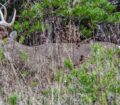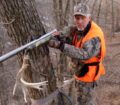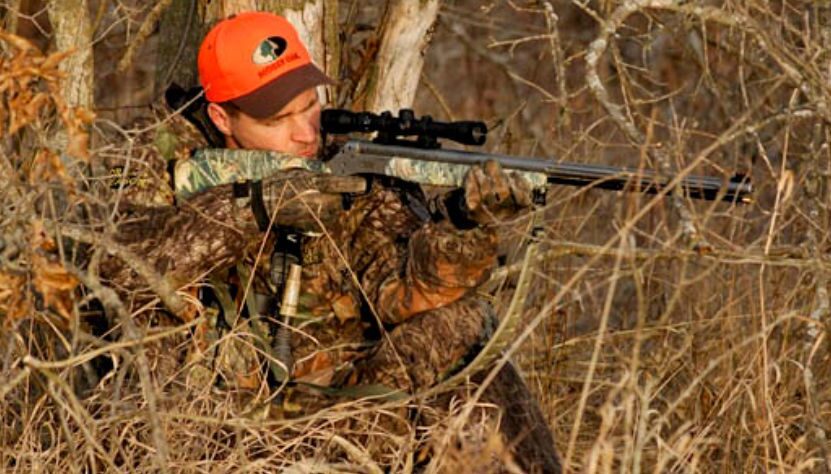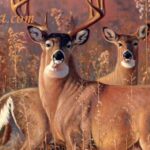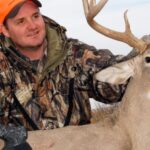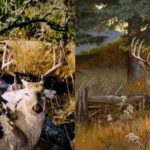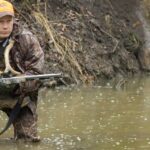Editor’s Note: Longtime deer hunter Bob Walker of Livingston, Alabama, has spent much of his life hunting in that deer-rich state. Walker doesn’t remember a time when he hasn’t deer hunted or hunted almost every day. On the last day of the season, Walker usually searches for a trophy buck.
“At the end of the deer season in most states, hunters must take into consideration the rut, which will be occurring then or have just ended,” Walker says. “Certain tactics will put you on a level playing field with the trophy buck. Even if the dominant buck almost has stopped breeding, he remains very defensive of his domain. The technique I use challenges his monarchy.

“I’ve learned the strategy of grunt-and-run from another of my favorite sports – hunting spring turkeys. On the last day of turkey season, when most of the hens are sitting on their nests, I’ll cover a vast amount of ground and use the cutting call for turkeys, hoping to find an active gobbler that will come in quickly. This method often produces a long beard when no other type of call will lure in these older, smarter birds. This same calling-and-running technique at the end of the season allows me to cover plenty of ground and find a big buck. Then, if I can make him mad enough, he’ll come close enough for me to take.”
Walker believes if you’ve pinpointed where a big buck is, you’ll stay ahead of the game. However, even if you don’t know where trophy buck beds are, go to the thickest cover on the property you hunt before daylight with your tree stand, grunt call, and rifle, and follow Walker’s game plan.
“Get into your tree stand before daylight, and grunt softly just when enough light glows to see for shooting,” Walker explains. “As the sun brightens up the day, imitate the sounds a buck makes while chasing a doe or that several bucks will make if all chase the same estrous doe.”
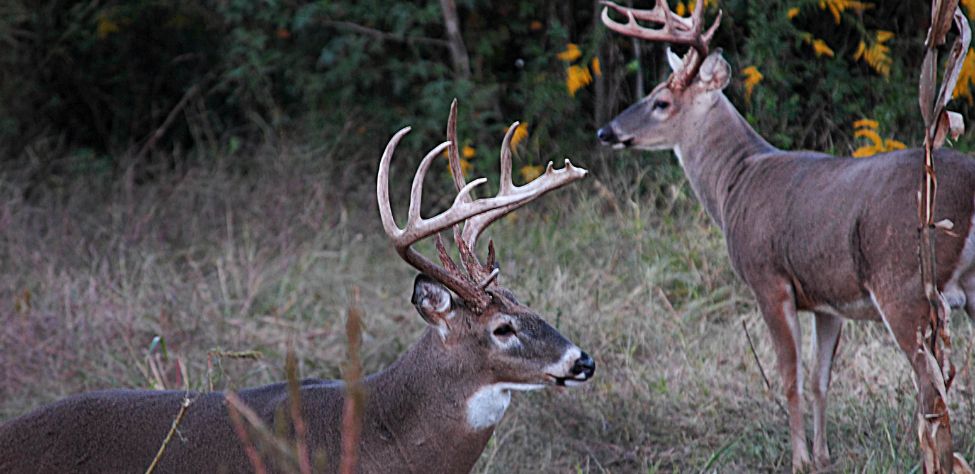
You must either set up on the edge of a thicket or in a thicket where you can see 50- to 100 yards away to observe the buck as he approaches. When a buck chases a doe, he grunts almost continuously with short bursts of air as his lungs bounce. Fast, short grunts on a grunt tube imitate these sounds.
“As a buck chases a doe, he doesn’t run, walk or trot at the same speed,” Walker reports. “When he changes the speed of his gait, his lungs and internal organs bounce to a different rhythm. Therefore, vary the pace of your calling as you go through your grunting series.”
Using a tube-type grunt call, Walker points the barrel of the call at the ground and moves the call around the tree where his tree stand sits. He throws the call and makes the grunts sound like a buck moving close to the stand. If you make the sounds of a buck running and chasing a doe but don’t move those sounds around your tree, your grunting may not call in bucks.
“I use the loudest grunt call I can find that won’t break the sound of the grunt when I blow it hard,” Walker emphasizes. “If you use a loud grunt call, you always can blow that call softer to call in a close buck. But you can’t loudly blow a soft grunt call without the call breaking up. If a buck doesn’t hear the sound of your calling, the grunting has no effect. To penetrate a large expanse of thick cover where a trophy buck may hold, you need to use an extremely loud grunt call. When a buck hears a loud grunt call, he can’t tell if the grunt sounds louder than the real grunt call a deer makes.”
By extending and collapsing the tube part of the call, Walker gives the call a different voice, making the call sound as though more than one deer is in the region. “I grunt continuously, as long as I can, when using the call,” Walker explains. “I can blow the grunt call constantly for about 45 seconds without becoming winded. I then wait for about 1 minute and grunt again for another 45 seconds.”
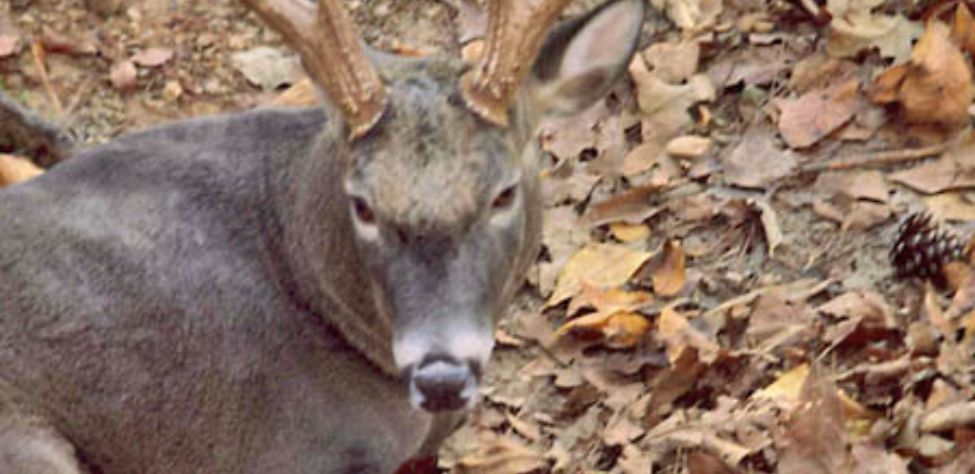
The entire time Walker blows the grunt call and waits between calls, he holds his rifle, prepared for the shot. “Expect the buck to come running to you,” Walker mentions. “Using this tactic, you’re standing right outside his bedroom window and daring him to come out and fight. If you call effectively, an angry buck will want to come in and whip you quickly. Be ready for him.”
Walker has observed often that as long as a buck hears grunting, the buck will move toward him. But sometimes when the grunting stops, so does the buck. “To keep a buck moving toward me, I never wait more than 1 minute between calls,” Walker advises. “If you can see the buck, call for about 30 seconds, stop for 30 seconds, and then begin your calling sequence for another 30 seconds. By pausing between your grunts, you allow the buck to stop from time to time. But don’t let him become disinterested in your calling.”
Walker continues this grunting sequence for about 15 minutes at first light. He’ll then stop calling for 5 minutes and call again for another 15 minutes. Walker says, “If after 30 minutes of calling, I fail to see a buck, I’ll come out of my tree stand, put on my camouflage headnet and gloves, move very slowly and quietly 150 to 200 yards to another thicket with my rifle, sit on the ground and repeat my calling sequence once more. I’ll run and grunt until a buck appears. But never grunt while you walk. When you hunt the last day of the season, nervous hunters may mistake you for a deer, if you sound like one. Always have a clear view in front of you and a tree wider than your shoulders behind you when you grunt.”

How to Hunt and Take Big Buck Deer on Small Properties
In this book, you’ll hear from 14 hunters who either have gained permission or leased properties as small as six acres to as much as 250 acres, and how they consistently take older-age-class bucks off these little lands.
VERSIONS: AUDIBLE, KINDLE & PRINT

Jim Crumley’s Secrets of Bowhunting Deer
Using a black magic marker and a gray work jumpsuit, Jim Crumley of Buchanan, Virginia, drastically changed the nature and purpose of hunting camouflage when he created the first sportsman’s camouflage – Trebark. Crumley’s love of bowhunting and his desire to be more invisible changed hunting clothing forever.
In this hunting guide, he shares the wisdom that he’s learned throughout his lifetime about how to be a hunter, how to find a deer lease, how to scout for deer, and more.
Special features include how to:
- Have a magic 60 acres to hunt
- Decide the best equipment to use
- Find deer year-round
- Locate land to hunt
- Know the best place to put your tree stand
- Get bucks within bow range
VERSIONS: AUDIBLE, KINDLE & PRINT

How to Hunt Deer Like a Pro
How do you know if the land you hunt has a trophy deer on it? Wildlife manager Bob Zaiglin, of Uvalde, Texas and Jim Crumley, the father of modern-day hunting camouflage, tells you how to find out. GPS can make finding and taking that trophy buck easier. This hunting guide will teach you how to hunt big bucks where no one else can find them, how to call deer, and how to become versatile as a deer hunter, so that if one deer tactic doesn’t work, another one will.
In the chapter, “How to find Bucks at Scrape,” Dr. Keith Causey, retired professor of Wildlife Science at Auburn University, describes the best way to hunt a scrape.
Brad Harrison of Neosho, Missouri, is a nationally-known videographer, professional deer hunter and master at calling deer. Another master is Will Primos of Primos Game Calls. These two experts will tell the best deer calls and when to use them in this book.
And for over 20 years, Bo Pitman, lodge manager of White Oak Plantation, has been studying deer movement patterns. He explains what types of conditions are best for predicting deer movement.
VERSIONS: AUDIBLE, KINDLE & PRINT

Deer hunting and deer hunters are drastically changing each year. To learn new techniques for hunting deer and have more places to hunt, I’ve interviewed some of the best deer hunters in the nation and share their tactics in How to Hunt Deer Like a Pro: Volume II.
In Chapter 10, Jacob Lamar tells you his tactics for consistently taking older-age-class bucks on public lands in several states. Chapter 11, Bob Walker explains how to find places on public lands where you can hunt that 99 percent of the other hunters never have considered hunting. The Bonus Chapter with David Ramey tells you how, where, when and with what equipment to take big Kansas bucks on public lands by hunting in 100-degree weather when others won’t hunt.
Chapter 13, Mark Drury, his family and his guests take mature bucks every season by having more small places to hunt rather than one large property. Drury explains the strategy of having satellite farms to hunt that only may be 50-150 acres each or less. Chapter 15, Pat Reeve, who hunts far-northern states and Canada, says, “I don’t like hunting for mature bucks until the weather is 20 degrees or less.” Chapter 4, Dr. Larry Marchinton says that funnels are the most-reliable stand sites to hunt for big bucks and tells why.
VERSIONS: AUDIBLE & PRINT
Tomorrow: How Midwesterners Bag Big Deer

